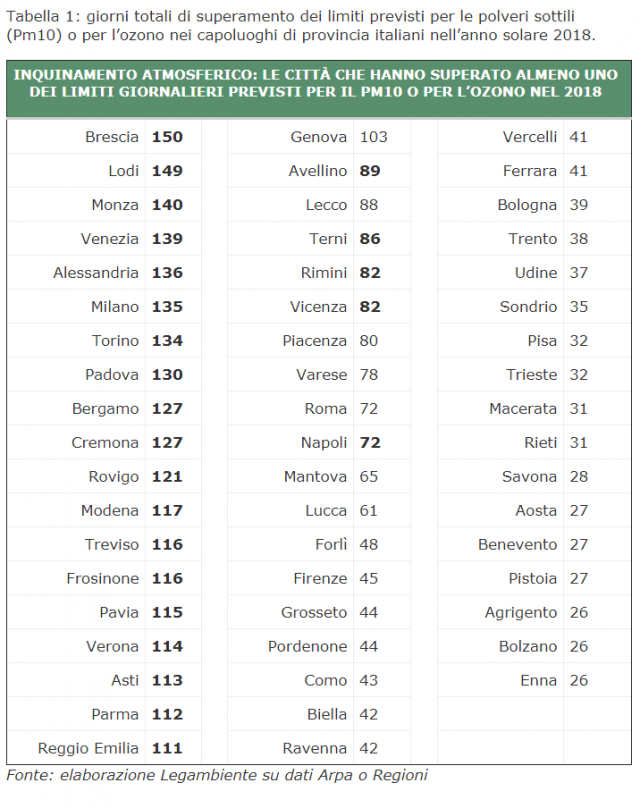Smog and pollution are choking Italian cities year-round and many towns are exceeding their limits on fine particles and other pollution, according to a new report from Italian environmental authority Legambiente.
Its annual report, published this week, warned that 2018's figures were a “red alert” for Italy.
At least one of two daily pollution limits, on fine particles and ozone emissions, was exceeded in 55 of Italy’s regional capitals.
Unsurprisingly many of Italy’s big cities exceeded the limits. Venice was ranked fourth, closely followed by Milan, Turin and Padua. Rome was 28th and Naples 29th on the list.
Almost all of the worst affected cities are in northern Italy. Frosinone, south of Rome and an emerging centre of industry, falls outside Italy's traditional “industrial triangle” in the north-west, as does Macerata in Campania and the Sicilian town of Enna.
The main causes are reported to be industry, inefficient domestic heating systems, agricultural practices and, most of all, heavy traffic.
In Italy, cars continue to be by far the most-used means of transport. 65.3 percent of journeys are made by car, Legambiante wrote, with the emissions from some 38 million cars choking Italy’s towns and cities.
Italy has repeatedly been reprimanded by the European Union for exceeding the bloc's recommended limits on air pollution.
READ MORE: Smog levels way above safe limits in northern Italy
Turin, Milan and Naples are the worst cities in the EU for dangerous particulate pollution, while Italy has the bloc's highest number of premature deaths from nitrogen dioxide fumes spewed out by diesel vehicles, according to the European Environment Agency.
“In Italy the lack of an effective anti-pollution strategy continues to weigh enormously,” stated Giorgio Zampetti, director general of Legambiente “and the fact is that in recent years air pollution has been dealt with in an uneven and extemporaneous manner.”
Examples of the short-term strategies currently used include the temporary ban on highly-polluting vehicles sometimes put in place in northern cities, or the so-called targhe alterne, under which cars with license plates beginning with odd or even numbers are alternately banned from the roads on Sundays.
Legambiente is instead calling for an “ambitious National Plan against pollution” which it says would introduce binding targets and proven measures, including city-centre congestion charges like those used in the UK.
“Atmospheric pollution continues to be a constant emergency in our country,” said Zampetti. “We can no longer try to justify it with the adverse weather conditions in the Po Valley or by linking it to seasonality.”
READ ALSO:



 Please whitelist us to continue reading.
Please whitelist us to continue reading.